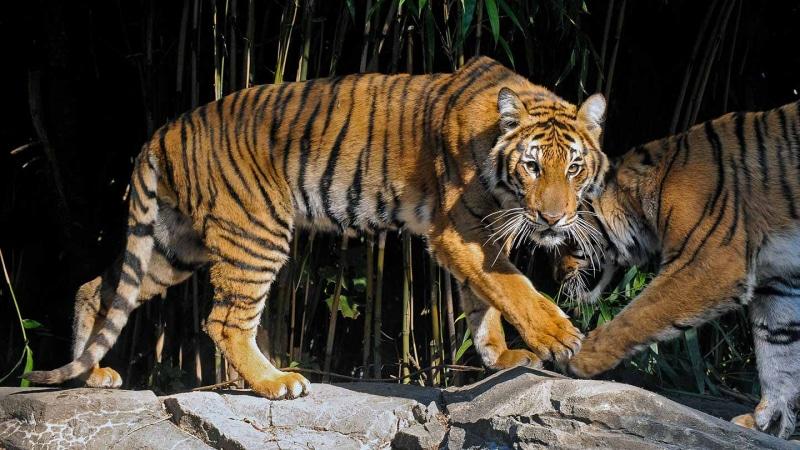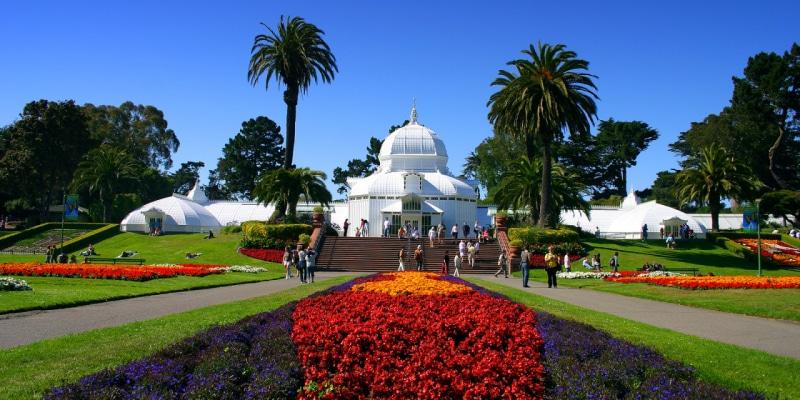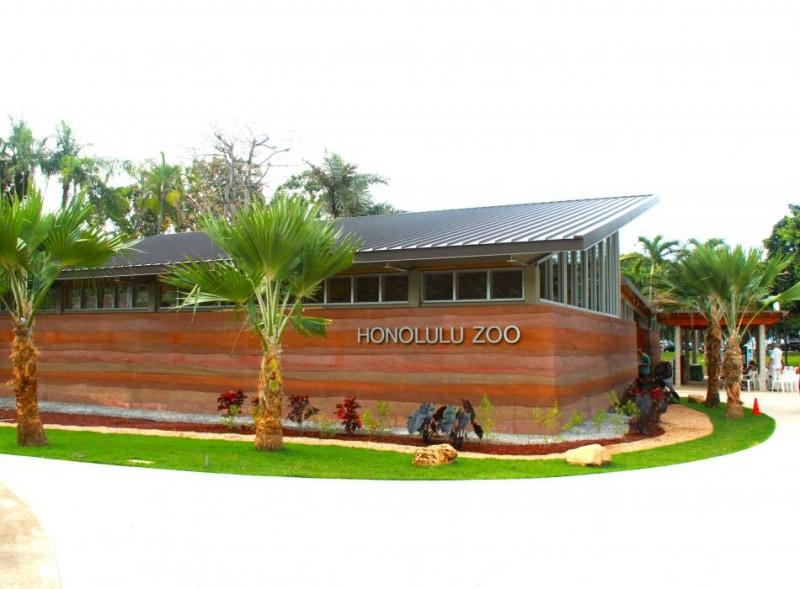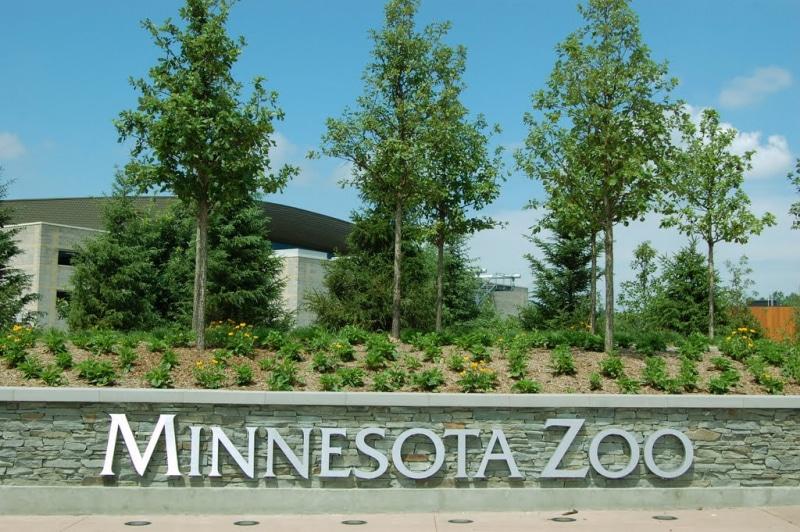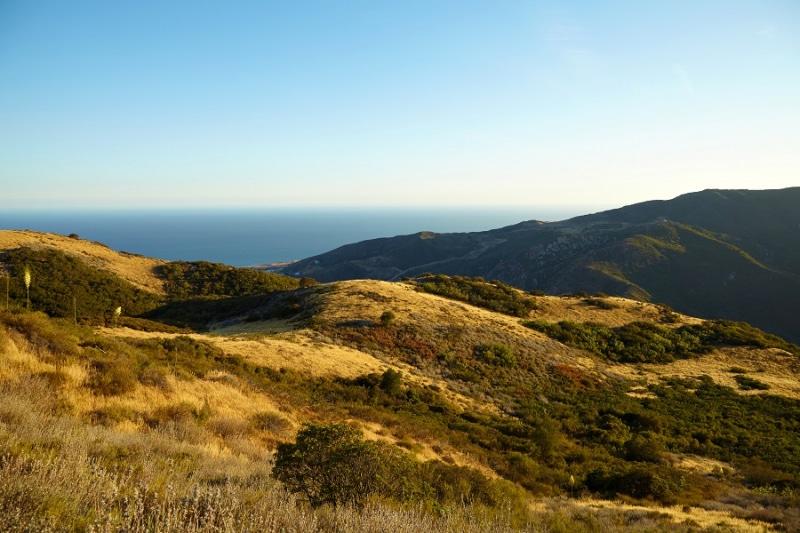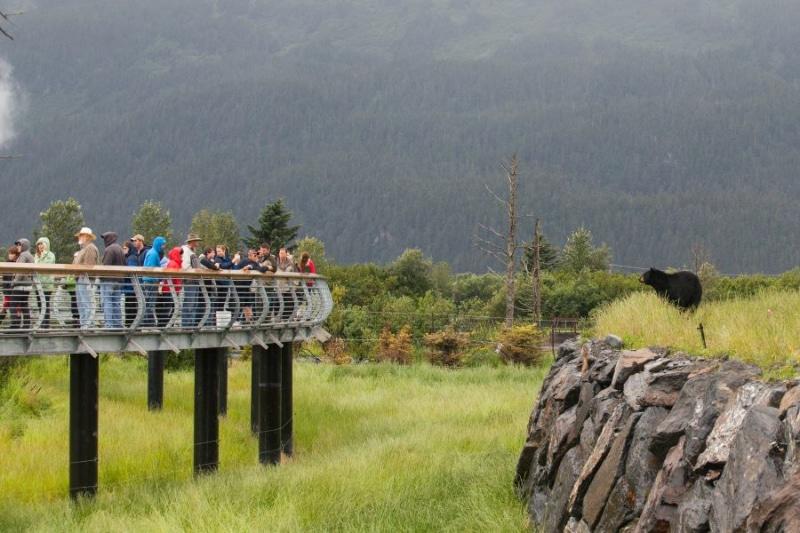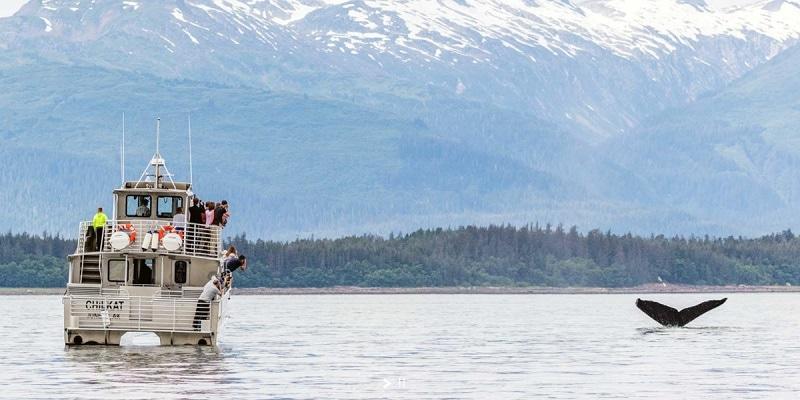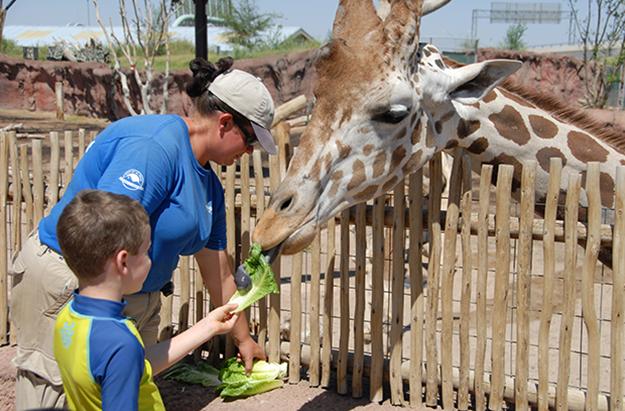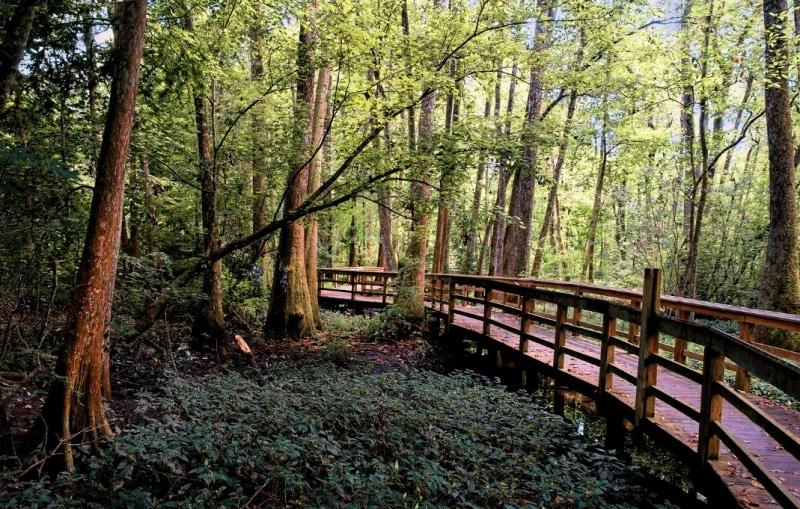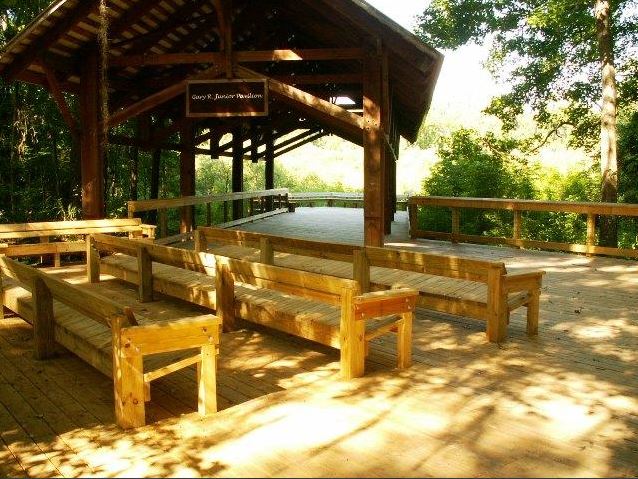WildlifeAreas, United States of America
Removed from Unnamed collection
Bronx Zoo
The Bronx Zoo of the Wildlife Conservation Society is the premier place to study and appreciate the world's many creatures. Home to more than 6,000 animals, the zoo spans 265 acres that re-create the diverse natural habitats of its numerous residents. Open year-round, it’s a great experience in any season. During the winter, be sure to stop by Tiger Mountain or Himalayan Highlands to see big cats enjoying the chilly outdoors—then head to World of Reptiles or JungleWorld for a warm up with tropical wildlife. https://www.nycgo.com/attractions/bronx-zoo
Map
Removed from Unnamed collection
Golden Gate Park
Golden Gate Park is the third most visited park in the United States. While the park is free to visit during the day, popular attractions charge admission, such as deYoung Museum, California Academy of Sciences and Conservatory of Flowers. The park is filled with gardens, museums, art, flowers, trees, lakes, birds and wildlife. There are also plenty of opportunities to participate in sports, clubs and other activities. Browse the site for information on parking, maps, weddings, hotels, permits, making reservations, transportation, contact numbers, and the history of Golden Gate Park. https://goldengatepark.com/
Map
Removed from Unnamed collection
Muir Woods
Walk among old growth coast redwoods, cooling their roots in the freshwater of Redwood Creek and lifting their crowns to reach the sun and fog. Federally protected as a National Monument since 1908, this primeval forest is both refuge and laboratory, revealing our relationship with the living landscape.
Muir Woods National Monument is world renowned for its old-growth coastal redwoods, attracting over one million visitors each year. With the park’s popularity come pressures on a fragile ecosystem representing more than 380 different plants and animals.
The incredible diversity of flora and fauna at Muir Woods can be daunting sometimes, elusive at other times. The redwoods themselves dominate the scene, but the Steller's jay often steals the show. Ladybugs clustering by the thousands on ancient horsetail ferns boggle the imagination, while the slimy banana slug is able to disgust and fascinate all at once. Plants adapt to low light levels on the forest floor, while whole plant and animal communities bustle in the canopy above our heads. https://www.nps.gov/muwo/index.htm
Map
Removed from Unnamed collection
Honolulu Zoo
The Honolulu Zoo is 42 lush tropical acres of mammals, reptiles, birds and more! A children's zoo, African Savannah exhibit, playground and snack bar complete the visit.
The Zoo is 42 acres and home to almost 1000 different animals from the tropics. Komodo Dragons, orangutans, elephants, primates, birds, reptiles, amphibians, and a variety of African animals can be seen daily. Be sure to see the wildest place in Waikiki! https://www.gohawaii.com/listing/honolulu-zoological-society/442
Map
Removed from Unnamed collection
San Diego Zoo
An urban paradise for all ages, the San Diego Zoo is a must-see in Southern California, with more than 4,000 rare & fascinating animals. See giant pandas, Komodo dragons, orangutans, koalas, flamingos, polar bears, and more. With animal encounters, interactive experiences, and a lively atmosphere, it's a great place for family fun and gathering friends. http://zoo.sandiegozoo.org/
Map
Removed from Unnamed collection
McKinney Falls State Park
McKinney Falls is a 641-acre park features over 80 campsites, including developed (RV) and hike-in sites. Screened shelters, group shelters and a group dining hall are also available. Outdoor recreation opportunities include hiking, mountain biking, bicycling, swimming, birding and wildlife observation. Onion Creek, which flows 1.7 miles through the park, offers both swimming and fishing opportunities. https://www.austintexas.org/listings/mckinney-falls-state-park/2895/
Map
Removed from Unnamed collection
Minnesota Zoo
Located just minutes south of Mall of America, the Minnesota Zoo brings education and entertainment to life! The zoo is home to penguins, a lush tropical forest and aviary, marine center, boreal forest, tundra and a family farm. With more than 4,300 animals, you're bound for a new adventure on every visit! The zoo also has banquet facilities and picnic rentals available and group discounts for 20 or more. https://www.exploreminnesota.com/things-to-do/3079/minnesota-zoo
Map
Removed from Unnamed collection
Santa Monica Mountains National Recreation Area
Think there’s no wide-open countryside left in Los Angeles? Think again. The Santa Monica Mountains stretch for 80km across the northwestern boundary of the Los Angeles basin. Within the range lie more than 60,000 largely undeveloped hectares of grassy swales, rock-studded hillsides, tree-shaded glens, and windswept beaches. A mosaic of state, local, and federal preserves protects this land, all managed under the umbrella of Santa Monica Mountains National Recreation Area, the nation’s largest urban national park.
One of the few mountain ranges in the United States to run east to west rather than north to south, the Santa Monicas can claim big nature bragging rights. Considered to be a “botanical island” in L.A.’s urban corridor, the slopes that run straight down to the Pacific are covered in chaparral, coastal sage, springtime wildflowers, and oak and sycamore forests. More than 20 species of endangered plants and animals thrive here. This is a place where you might see a bobcat stalk its prey, a coyote lope across the grasslands, or a golden eagle fly overhead. https://www.visitcalifornia.com/au/attraction/santa-monica-mountains-national-recreation-area
Map
Removed from Unnamed collection
Alaska Wildlife Conservation Center
At the 200-acre Alaska Wildlife Conservation Center, jaws drop in awe-even those of longtime Alaskans who've studied grizzlies and other animals up close. AWCC's mission is to preserve Alaska’s wildlife through conservation, research, education and quality animal care. The center, which opened to the public in 1993, also educates visitors about Alaska's wildlife. Coyotes peer out from behind the brush while a bald eagle swoops in on the salmon remains left by a grizzly bear. Wood Bison plod through 65 acres of tidal flat terrain, as part of a program that will one day restore the species to the Alaskan wilderness. Animals that cannot be released into the wild are given a permanent home at the center. Come be a part of these exciting programs and watch these animals display their natural, “wild”, behaviour.
Set on the shores of Turnagain Arm, surrounded by mountains and hanging glaciers, the center is the perfect setting to learn about Alaskan wildlife. The animals are located in different areas grouped around several road loops. Perhaps the best way to view the facility is to first drive around to get your bearings, then park by the gift shop and walk. Each habitat area has a sign explaining the history and habits of the particular animals. https://www.alaska.org/detail/alaska-wildlife-conservation-center
Map
Removed from Unnamed collection
Admiralty Island
No trip to Alaska is complete without bears. Just twenty minutes from Juneau by floatplane is Admiralty Island, home to one of the world's highest density brown bear populations. Nicknamed “Fortress of the Bears,” there are approximately 1,600 bears — one for every square mile of the island. The most popular place to see these big, fuzzy creatures in action is Pack Creek Bear Sanctuary. Watch bears feed on salmon during the peak viewing season (July through August). In addition to bear viewing, you might spot seabirds, harbor seals, sea lions, whales, Sitka black-tail deer, or sea otters. The island is also home to the world’s greatest concentration of nesting bald eagles. https://www.traveljuneau.com/things-to-do/whale-watching-wildlife-viewing/admiralty-island-bears/
Map
Removed from Unnamed collection
Juneau Whale Watching
Hop on a boat for a classic Alaska whale watching adventure. At the right time of year, you’re bound to see humpbacks and orcas congregate in the calm waters and put on a show. See them flip their tails above water or breach (when they leap all the way out of the water and then splash back down). With luck, you’ll get the breathtaking sight of bubble net feeding—a unique technique used by humpback whales circling and blowing bubbles to bring fish to the surface of the water when they spontaneously swim upward together.
The best time to whale watch is from April to November, when approximately 600 humpbacks inhabit the waters of the northern Inside Passage. Whale watching tours are offered in Juneau and near Glacier Bay. The orca, or killer whale, is also common to Juneau. But our Shamu doesn't jump through hoops like he does at Sea World. These whales, though much smaller than humpbacks, have been known to pursue seals, moose, and even other whales. https://www.traveljuneau.com/things-to-do/whale-watching-wildlife-viewing/
Map
Removed from Unnamed collection
El Paso Zoo
Locally recognized as the Best Place to Take the Kiddos, the El Paso Zoo sits on 35 acres of fun and adventure. Bigger and better than ever, the El Paso Zoo is an expansive green space that is home to exotic animals from around the world and features family attractions such as the African Star Train and the Hunt Family Desert Spring water feature and the Foster Tree House Playground. Accredited by the Association of Zoos & Aquariums (AZA), the El Paso Zoo celebrates the value of animals and natural resources and creates opportunities for people to rediscover their connection to nature. https://visitelpaso.com/places/el-paso-zoo
Map
Removed from Unnamed collection
Veterans Oasis Park and Environmental Education Center
Chandler unveiled another dynamic, mixed-use facility in April 2008 with the Veterans Oasis Park and Environmental Education Center located in the northeast corner of the city at the intersection of Lindsay and Chandler Heights Roads. The center includes four classrooms for wildlife preservation and environmental awareness, exhibit areas, outdoor amphitheatre, nature store and an urban fishing lake, all surrounded by more than four miles of trails. A primary purpose of the facility is to recharge reclaimed water into the ground for later use. The staff works with local schools to develop nature-oriented activities that complement their curriculum. Programs offered for residents and visitors cover topics such as birdwatching, green living, gardening, water conservation, nature photography, orienteering, alternative energy and stargazing. Entrance to the Environmental Education Center is free and visitors are welcome to view the exhibits and walk the trails around the urban fishing lake. https://www.visitchandler.com/listings/veterans-oasis-park-and-environmental-education-center/276/
Map
Removed from Unnamed collection
Bluebonnet Swamp Nature Center
A 103-acre facility dedicated to conservation, education, recreation and tourism. It houses an award-winning, 9500-square-foot building filled with live animal exhibits; photographic presentations of the site's flora and fauna; natural artefact and mineral displays; and a sizeable, vintage waterfowl decoy carving collection. Ecology and art exhibits are featured periodically. Over a mile of gravel paths and boardwalks link varied habitats such as the cypress-tupelo swamp, beech-magnolia and hardwood forests. Wildlife is plentiful at Bluebonnet Swamp, including hundreds of bird species utilizing the site throughout the year. Birders can view seasonal species during peak migrations, as well as year-round residents. While snakes and turtles are commonly seen from the trails, raccoons, rabbits, opossums, armadillos, squirrels, foxes, coyotes, deer and otter are also known to inhabit the site. Nature programs and environmental education are conducted throughout the year including educational group tours, live animal encounters, holiday and summer day camps, toddler activities, birding walks, field trips and special events. https://www.visitbatonrouge.com/listing/brecs-bluebonnet-swamp-nature-center/209/
Map
Removed from Unnamed collection
Bivens Arm Nature Park
Bivens Arm Nature Park is 57 acres of marsh and oak hammock with a wildlife sanctuary, shaded family picnic grounds, an observation pavilion and a mile-long nature trail with a 1,200 foot boardwalk.
The wetlands and creeks bordered by beautiful upland mixed forests is a true natural treasure. The Park connects the southernmost Gainesville creeks to the wetlands of Paynes Prairie State Preserve. The park’s trail meanders through uplands past numerous large live oaks, while the boardwalk and main pavilion border a small marsh.
Birders especially enjoy the Bivens Arm Nature Park, where wading birds, including great blue herons, little blue herons, cattle egrets, great egrets and snowy egrets can be seen. You will also see purple gallinules, common moorhens, and a variety of native turtles. You may hear barred owls or great horned owls, and in April and October you may see migratory songbirds such as hermit thrushes and American redstarts. http://www.visitgainesville.com/attractions/bivens-arm-nature-park/
Map

